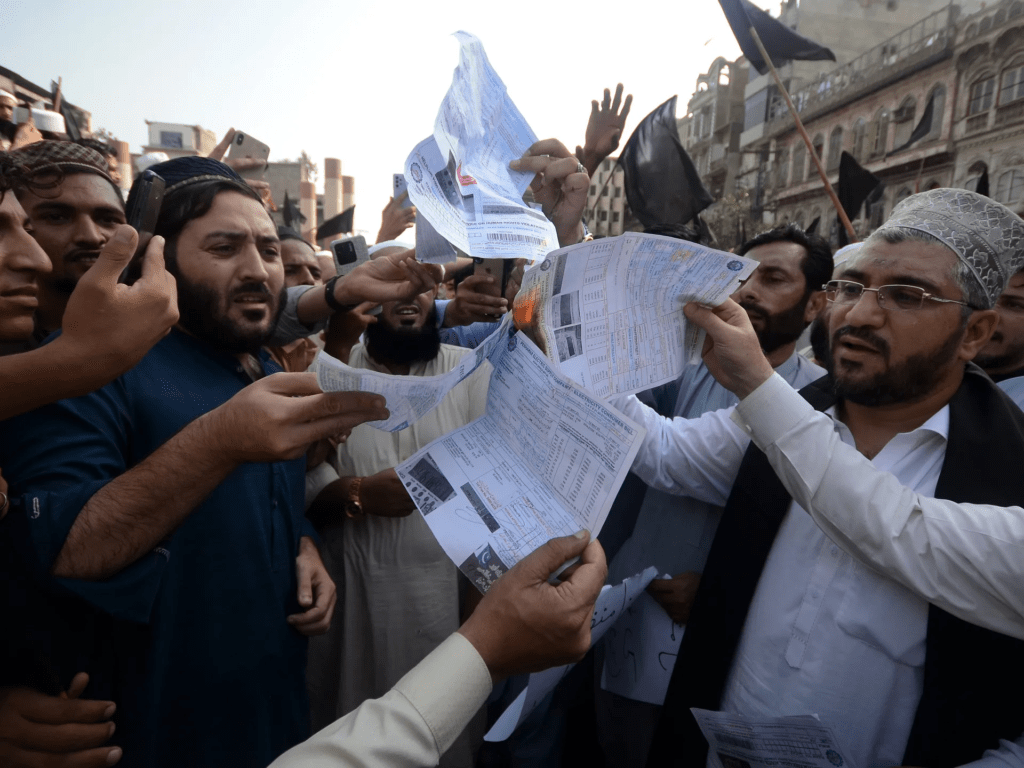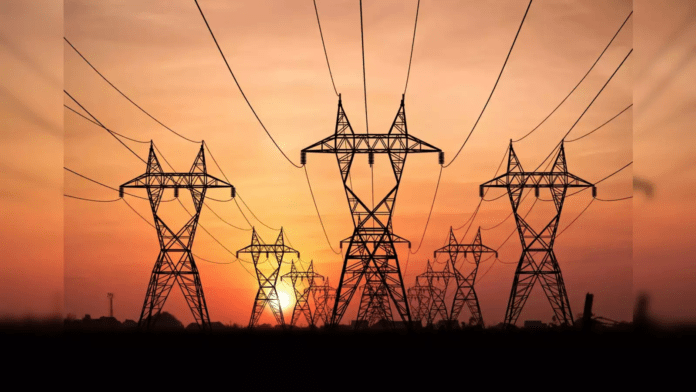Electricity, a basic necessity in today’s world, its fundamental right almost everywhere[1], but it has become increasingly unaffordable for the average person in Pakistan. Compared to the sharp rise in electricity prices in Pakistan, neighboring countries offer significantly lower rates – In Afghanistan, electricity costs 2.5 Afghanis (around Rs 3.92) per unit for up to 200 units, while in Bangladesh, the rate is Tk 7.20 (approximately Rs 17.07) per unit. In India[2], the rate is Rs 6.29 per unit[3]. However, in Pakistan, the cost for domestic consumers is much higher, for different slabs varying from Rs 23.75 to Rs.41.65 plus taxes[4] with fuel adjustments which may reach new heights to exceed Rs.65/unit.[5] One ponders as to why this disparity? There is the nuisance of Capacity Charges being paid to IPPs (Independent Power Plants) according to their capacity, not according to the electricity generated and consumed. Resultantly some IPPs are paid billions of rupees without generating a single unit while others running at 20 or 30% installed capacity, get payment for 100%. Resultantly the circular debt keeps increasing and presently it stands at Rs 5.42 trillion (5420 Billion which equals to $18.07 billion).
Tax paid by different sectors (FY 24)[6]
1. Banking – 946.08 Billions (Bn)
2. Salaried Class – 367.80 Bn Bn
3. Textile Exporters – 111.23
4. Petroleum Products – 1195.00 Bn
5. Power Sector – 640.61 Bn
6. Sugar Sector – 135.24 Bn
7. Telecom Sector- 187.19 Bn
8. Pharmaceutical Sector- 100.63 Bn
Economic Terrorism – Threat to National Existence
IPPs Capacity Charges: Rs 2100 Billion (2.1 Tr)[7] ($7.24 billion) [8],[9] which is equal to the Defence Budget 2.12 Tr (7.32 billion $)[10]. How can a country survive in such a scenario with two Defence budgets? Circular debt in the power sector: Rs 5.42 trillion (5420 Billion) = $18.07 billion. The USSR disappeared from the map, not by invasion of foreign powers but due to its endemic economy and it became Russia, though it had the largest members of atomic weapons and an army which could not protect from internal economic threat. While we focus on combating the nuisance of “Terrorism by Khawarij[11]” of TTP[12], the weakened economy has deeply destabilized the state, which was built through immense effort and sacrifices, leading to the highest electricity bills in the region. This has far-reaching consequences, disrupting the social fabric, burdening citizens, crippling industries, making exports non-competitive, and exacerbating unemployment, poverty, economic instability, circular debt and defense.
Are our experts blind to this economic sabotage? Who set us on this disastrous course that threatens the country’s very survival? It’s not hard to identify responsible criminals, and hold them accountable, yet they remain untouchable because they control the levers of power.[13] The defense of the state cannot be entrusted to those who have led it into this situation.
The SIFC (Special Investment Facilitation Council) should prioritize this issue. By reducing power costs and leveraging the country’s abundant labor force, both foreign and domestic investments would naturally increase significantly.
Installed Vs Transmission Capacity
Pakistan has an installed power generation capacity of approximately 42,000 MW, but its transmission system can only handle about 22,000 MW. The country’s peak demand reaches around 31,000 MW[14], creating a shortfall of 9,000 MW that cannot be transmitted due to the limited capacity of the transmission and distribution infrastructure. This shortfall persists despite the country’s installed capacity exceeding its peak demand. The underutilization of this capacity, alongside one sided agreements with Independent Power Producers (IPPs) which is Riba Al-Bayou)[15], raises serious concerns. Solar energy contributes only 600 MW, or about 1.4% of the total installed capacity,[16] which needs to be increased.

Tax, Inflation & Debt
It appears from the above that the public and the salaried class[17] is being taxed[18], heavily to pay the IPPs. Rs. 367.80 were collected from salaried class in 2024, which has been further increased in budget 2024-25. People are now crying because of very heavy/inflated electric bills, the use of minimum electricity and the hot climate but a handful of IPPs owners are paid heavily from this tax without production of any electricity. Is this justice or oppression?.
On the other side, Independent Power Producers (IPPs) have enjoyed tax breaks of Rs. 1.2 Tr since 1990.(19) The Government is begging countries to reschedule 12 bn $ loans, seeking a bailout package of 7 bn $ from the IMF. (But it also keeps paying $7.24 billion to the IPPs, these loans and debt appear to be not for people but to feed the IPPs. When will sense prevail? Now the Supreme Court has been moved against this injustice.[19]
Bizarre Move
The Punjab government’s decision to temporarily reduce electricity tariffs by Rs14 per unit for consumers using up to 500 units in August and September is a big diversion to save the real plunderers.[20] The subsidy which will cost Rs 45 billion is to be funded by cutting expenses in other government sectors, including development projects (An attractive idea). Additionally, there are plans for a Rs 700 billion solar panel scheme to further lower electricity costs in the future [IPPs will continue to get payments for reduced use of electricity].
Earlier, the Prime Minister announced a three-month relief period for lifeline consumers of electricity whose consumption remains below 200 units per month by giving a total discount of Rs 50 billion to the electricity lifeline consumers in July, August and September[21]. These are short-term moves and politically motivated that offer temporary relief without addressing the root causes of extremely high electricity prices, particularly the Capacity Payments to the Independent Power Producers (IPPs). While they provide subsidies of Rs.90 Bn, the IPPs continue to get Rs.2100 Bn/ year. Regrettably, this is only a case of political maneuvering, ad hoc-ism and narrative management at the cost of the exchequer but it is not a long-term solution[22]. This is more about gaining political popularity rather than providing a sustainable solution to the energy crisis, a dubious strategy at best. The consumption will be reduced in winters to provide some space to the government. Perhaps elections are on the horizon this winter, or maybe they’re just biding their time. The outcome of the deal signed with a protesting religio-political party regarding IPPs still remains to be seen.
A Quick Response to Threat (Expensive Electricity)
Currently, Independent Power Producers (IPPs) receive enormous payments in the form of capacity charge which is 71% of public electricity bills, while the actual cost of electricity only accounts for 29%. A practical solution to this imbalance would be for the government to utilize the full electricity capacity from the IPPs—already paid for by the public—and supply it at a reduced price. If transmission capacity is less then through away this surplus (as extra milk and food was thrown away to ensure only needed food is cooked in mess) or offering this extra electricity to the public and businesses at a lower cost, such as free or at half the price above a certain usage threshold, consumption would increase, and the government could generate more revenue.
To reduce transmission cost, the industry be given incentive for cheap electricity to pay for fuel and install industry in close vicinity of IPPs. Electricity will not be surplus, industry will flourish, new jobs and more productivity while export will increase. This strategy would reduce or eliminate the government’s losses, prevent the accumulation of circular debt, and stop IPPs from profiting excessively (71%) without producing electricity which is Riba al-Bayou (البیوع ربا( or Usury in Sales[23]. There could be many solutions keeping this strategy in view.
It is very strange that the government has no strategy or plans to tackle this biggest issue, but runs around begging for financial powers and the IMF to get more loans.
A “forensic audit” of IPPs would reveal many fraudulent activities and discrepancies in their reported capacity versus their actual operational capacity. Some IPPs are merely outdated, with significant differences between their on-ground and on paper fake capacities. Exposing these issues could lead to legal action, compelling IPPs to renegotiate contracts and agree to a “Take & Pay” policy instead of the current “Take-or-Pay” agreements.

However it is evident that the ruling elite is unlikely to pursue this proposal or any other course of action, which would disrupt a lucrative arrangement. They often cite reasons like the need to cover fuel costs to justify maintaining the status quo. A practical step would be to provide fuel incrementally, which would expose the true capacity of these IPPs one by one. Once the actual capacity is revealed, retroactive payments based on inflated figures could be refunded, with fines and legal consequences imposed for such fraudulent activities according to law. This is a broad strategic concept that requires further refinement and detailed planning. Unfortunately, it seems that the bureaucracy, which should serve the public interest, appears to be working in favor of the IPPs. They receive substantial salaries funded by taxpayers while seemingly benefiting from their ties to these IPPs (which warrants thorough investigation). The details of this strategy need to be developed further in phases—immediate, mid-term, and long-term—by those in power, with a focus on protecting the public’s interests rather than enriching a select few.
Capacity charges of IPPs is exploitative Usury, already described in detail in DJ January issue, also
available in the web.[24]
Link/ Reference
https://docs.google.com/document/d/1_ZDO-MbMqt27lwosuPsarhuY5fBFeiypGILYlBB_cWs/pub
[1] https://sys.lhc.gov.pk/appjudgments/2021LHC9976.pdf
[2] https://www.creditmantri.com/electricity-bill/
[3] https://arynews.tv/electricity-cost-comparison-in-pakistan-india-bangladesh-afghanistan/
[4] https://bit.ly/ElectricityTaxes
[5] https://www.samaa.tv/2087317280-electricity-bills-toskyrocket-as-new-tariff-slabs-applied-from-july-1
[6] https://www.dawn.com/news/1849969
[7] https://quran1book.blogspot.com/2024/07/Riba-IPPs.html
[8] https://bit.ly/CapacityCharges-IPPs
[9] https://arynews.tv/pakistan-to-pay-rs2091bn-in-capacity-payments-to-ipps-in-fy24/
[10] https://propakistani.pk/2024/06/13/budget-2024-25-pakistans-defense-budget-increased-by-17/
[11] https://PaighamPakistan.wordpress.com
[12] https://TakfiriTaliban.blogspot.com/
[13] https://tribune.com.pk/independent-power-producers
[14] https://www.dawn.com/news/1430728
[15] https://DefenceJournal.com/2024/01/04/ipps-capacity-charges-exploitive-riba-gharar/
[16] https://en.wikipedia.org/wiki/Electricity_sector_in_Pakistan
[17] https://bit.ly/ElectricityTaxes
[18] https://www.brecorder.com/news/40308782
[19] https://www.dawn.com/news/1850373/sc-moved-toensure-electricity-supply-on-least-cost-basis
[20] https://www.dawn.com/news/1852660/
[21] https://www.dawn.com/news/1844826
[22] https://www.dawn.com/news/1853023
[23] https://bit.ly/CapacityCharges-IPPs
[24] https://bit.ly/DefJournal-Capacity-Payments





